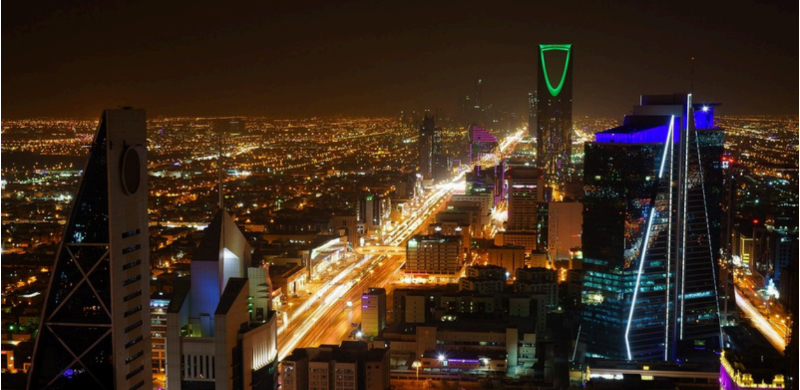
The Middle East is undergoing a dynamic transformation, driven by strategic economic visions, investment in diversification, and a rapidly evolving business environment. Over the next five years, international investors can find compelling prospects in sectors like energy (including both traditional and clean), technology, infrastructure, and financial services. This article highlights sectors supported by external sources, along with policy frameworks and demographics shaping the investment landscape.
High‑Growth Sectors Supported by Data
Energy (Oil, Gas & Clean Energy)
- The Middle East remains a global energy hub: in 2024, the region accounted for roughly 30% of global oil production and 17% of natural gas production. In 2025, it’s expected to invest around USD 130 billion in oil and gas supply – roughly 15% of global upstream investment.
- Simultaneously, clean energy investment is scaling up. In 2025, the region plans to spend about USD 10 billion on clean energy generation, a focal point of its energy transition efforts.
- Notably, renewable energy generation is growing: Saudi Arabia aims to increase its electricity capacity via a program targeting 40 GW photovoltaic, 16 GW wind, and 2.7 GW concentrated solar power by 2030.
- On the hydrogen front, several MENA countries are laying foundations for leadership in low-carbon hydrogen. Saudi Arabia’s NEOM green hydrogen plant (a joint ACWA Power and Air Products venture) is among the world’s largest. The UAE launched a National Hydrogen Strategy targeting 1.4 Mtpa by 2031 and 15 Mtpa by 2050. Oman has plans for up to 8.5 Mtpa by 2050.
- ACWA Power, a regional energy giant, is already driving major projects such as the utilities system for The Red Sea Project and the NEOM green hydrogen facility.
These developments underscore a strategic shift toward decarbonization and green energy alongside sustained energy infrastructure investment.
Technology, AI, and Digital Infrastructure
According to PwC’s 2025 TransACT report, the Middle East’s mergers and acquisitions (M&A) market showed resilience in 2024, with just a 4% decline (from 493 to 475 deals) compared with a global average drop of 17% – reflecting regional investor confidence. Technology, renewables, and infrastructure were key M&A drivers.
- Sovereign wealth funds like UAE’s Mubadala are active investors in tech assets, including AI, telecom infrastructure, logistics, and data centres. Mubadala deployed US$29.2 billion across 52 deals in 2024 alone.
- In a broader economic vision, PwC projects that strategic AI adoption and climate resilience efforts could unlock up to US$232 billion in additional GDP by 2035.
- The Financial Times reports Gulf states – particularly Saudi Arabia and the UAE – are heavily investing in AI to diversify economies, foster data industries, and pursue emerging business models. AI could add US$150 billion to GCC economies, although challenges remain in talent development and regulation.
Infrastructure & Logistics
- Long-term national development plans across MENA – such as Saudi Arabia’s Vision 2030, Abu Dhabi’s Economic Vision 2030, Qatar’s National Vision 2030, and Dubai’s Urban Master Plan for 2040 – are actively driving capital investment in energy, transport, digital infrastructure, and social services.
Demographics & Human Capital
- The MENA region is defined by a significant youth cohort. Around 30% of the population falls within the 15–29 age bracket, while approximately 55% are under age 30 – highlighting the scale of the emerging working-age population.
- In Saudi Arabia specifically, 63% of Saudi nationals are under 30, and over 70% are under 35, per government data.
This demographic dynamic presents both opportunity – for workforce development, innovation, domestic demand—and risk if job markets lag behind.
Policies, Incentives & Capital Markets
- Qatar’s Invest Qatar launched a US$1 billion incentive programme to attract investment. It offers packages covering up to 40% of setup, construction, staffing, and leasing costs over five years, targeting technology-driven sectors (like AI, cybersecurity, pharma) and logistics infrastructure.
- Sovereign wealth funds remain central to regional capital flows; Mubadala is a prominent global investor, allocating capital across diversified asset classes, including real estate, infrastructure, and private equity.
Why the Middle East Is a Worthwhile Investment Destination
- Strategic Vision & Diversification
National development plans – such as Vision 2030 (Saudi Arabia) and comparable strategies across the region – provide a clarified roadmap for diversification across energy, tech, infrastructure, and tourism.
- Strong Investor Ecosystem & Capital Deployment
Sovereign funds like Mubadala are deploying tens of billions into technology, infrastructure, and sustainability.
- Demographic Dividend
With 55% of the population under 30 and booming youth cohorts, the region offers a young, dynamic consumer and labor market.
- Supportive Policy Environment
Governments are rolling out targeted incentive programmes to attract FDI – Qatar being a prime example.
- Dual Energy Strategy
Continued upstream energy investment coexists with ambitious clean energy and hydrogen roadmaps, offering diversified exposure.
- Technology & Innovation Leadership
Growth in AI, digital infrastructure, and data assets – backed by sovereign actors and strategic investment – signals the region’s transition to a knowledge-based economy.
From green hydrogen and solar energy to AI, infrastructure, and incentives, the Middle East is charting a transformative path poised to attract significant global capital over the next five years.
Join us at our Middle East Family Office Investment Summit in Dubai on 15 and 16 December.
